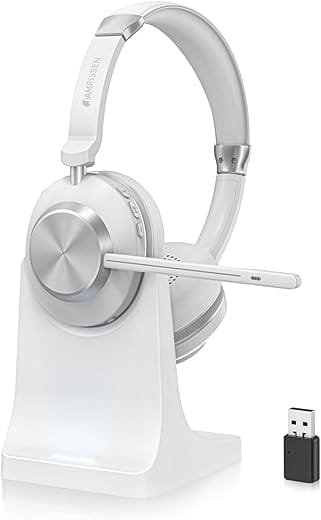This step-by-step guide outlines the process for testing the effectiveness of noise cancellation in headphones or earplugs. It begins by identifying the type of environment you’ll be testing in, such as a noisy café or a quiet room. The guide then recommends using a consistent sound source, like white noise or music, to evaluate how well the noise cancellation performs. It emphasizes the importance of comparing the noise levels with and without the noise-canceling feature activated, and suggests taking notes on your experience. By following these steps, you’ll be equipped to determine which noise-canceling option best suits your preferences and requirements.



Gather Necessary Equipment
Gather noise-cancelling headphones or earplugs to minimize external distractions during testing. Ensure that the headphones or earplugs fit comfortably and effectively block out ambient noise.
Collect a sound level meter or download a reliable smartphone app that can measure sound levels accurately. Familiarize yourself with how to use the device or app to ensure proper measurements during the testing process.
Gather a variety of sound sources to test against, including different genres of music, white noise tracks, and recordings of environmental sounds like traffic or nature. Prepare these sound sources in advance, so they are easily accessible during your testing sessions.
Choose a Controlled Environment
Select a quiet, controlled environment to conduct your tests. Choose soundproof rooms or areas with minimal background noise to ensure accurate results when assessing the effectiveness of noise cancellation. This will help isolate the variables in your testing and provide clear, consistent outcomes.
- Identify a location with thick walls or soundproofing materials.
- Avoid spaces near busy streets, construction sites, or loud appliances.
- Close windows and doors to minimize external sounds.
- Turn off fans, air conditioning, or any other noise-generating equipment.
- Consider using soft furnishings, like carpets and curtains, to absorb sound.
- Test the ambient noise level before beginning by using a decibel meter or a smartphone app.
Establish a Baseline Sound Level
Measure the baseline sound level in your environment before using any noise-cancelling devices. Grab a sound level meter and turn it on. Position the meter at ear height in your usual listening area, ensuring it’s away from walls or obstacles that could reflect sound. Press the measurement button and allow the device to capture the sound level for a few moments. Watch the reading stabilize, and note down the decibel (dB) level displayed.
Record this measurement methodically, as it will serve as your reference point. Repeat the measurement a couple of times to ensure accuracy, taking the average of your readings for a more reliable baseline. This recorded sound level is crucial for later comparison when you use your noise-cancelling devices, allowing us to see just how much ambient sound is being reduced.
Test Noise-Cancellation Functionality
Put on your noise-cancelling headphones or earplugs and activate the noise cancellation feature. Make sure you are in a quiet space to initially assess how well the headphones block out ambient noise.
- Select sound sources: Choose consistent audio, such as white noise, nature sounds, or music at a moderate volume. This will provide a stable backdrop to evaluate the noise cancellation.
- Play the audio: Start the chosen sound source at a consistent volume level.
- Listen carefully: Pay attention to how effectively the device reduces the perceived volume of the sound. Note if you can still hear background noises or if the audio becomes the dominant sound.
For example, if you use white noise at a low volume, observe how well you can focus on the sound without distractions from conversations or traffic outside. Alternatively, try listening to soft music and gauge how much the noise cancellation allows you to enjoy the music without interruptions from your surroundings.
Measure Sound Reduction
Activate the noise-cancelling device and ensure that the audio is playing at a consistent volume. With the device engaged, use the sound level meter to measure the ambient sound level in your environment. Position the sound level meter in the same location as before, ensuring it is stable and at ear level. Record this new sound level reading, which will indicate how much sound is being blocked by the noise-cancelling technology.
Compare this new measurement with the baseline sound level you recorded earlier in Step 3. Subtract the baseline reading from the measurement taken with the noise-cancelling device active. This calculation will provide you with a clear quantification of the effectiveness of the noise cancellation. Analyze the difference to understand how well the device performs in reducing unwanted noise while the audio plays.
Assess Comfort and Audio Quality
Assess the comfort of the noise-cancelling device by wearing it for an extended period. Pay attention to how it feels on your ears and head. Note any pressure points, irritation, or discomfort that may arise. Adjust the fit and observe if it improves comfort. Ensure the device remains snug but not overly tight; this balance is crucial for prolonged use. Take detailed notes on how long you can wear the device before discomfort sets in, as well as any specific areas that cause issues.
Evaluate the audio quality by listening to a variety of sound sources, such as music, podcasts, or audiobooks. Focus on clarity, balance, and richness of sound. Pay attention to any distortions like muddiness or excessive bass that may hinder the experience. Adjust the equalizer settings if available, and assess whether changes enhance the audio. Record specific observations about any anomalies in sound reproduction, noting how they affect your overall enjoyment and immersion.
Summarizing Key Testing Methods
In conclusion, we hope this guide has equipped you with the necessary steps to effectively test the noise cancellation capabilities of your devices. By measuring sound reduction while taking into account comfort and audio quality, we can make informed decisions that align with our personal preferences and needs. Whether we’re looking to enhance our listening experience or simply enjoy some peace and quiet, understanding the effectiveness of noise cancellation is key. Happy testing!

